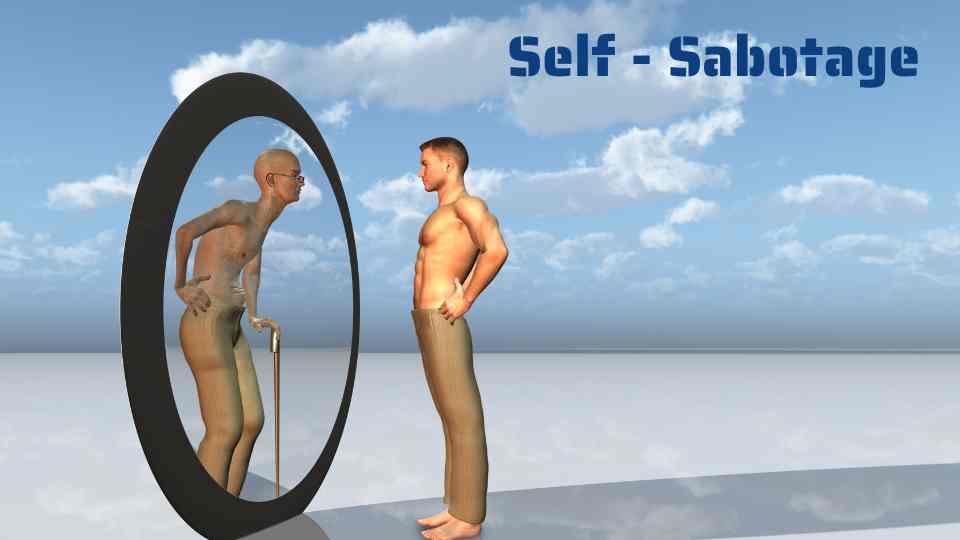🌟 The Power of Focus: Your Energy’s Steering Wheel
By Dr. Ritu Goyal | April 9, 2024
Have you ever wondered why some people seem to manifest their dreams so easily, while others keep trying but feel stuck?
The answer often lies in one word: FOCUS.
In our busy world, where attention is constantly being pulled in a thousand directions—notifications, responsibilities, worries—it’s easy to forget that focus is not just mental—it is energetic.
🔥 1.Focus is Energy Direction
Focus is like a steering wheel for your energy.
Wherever you direct your attention, your energy naturally follows. And wherever energy flows, that area begins to expand and grow.
Whether it’s a relationship, a health goal, a career dream, or your spiritual growth—without focus, energy gets scattered. And when energy is scattered, results become slow or blocked.
This is why many people feel frustrated despite putting in hard work. The problem isn’t lack of effort—it’s lack of direction.
💫 Without Focus, Success Stays Elusive
You may have brilliant ideas, pure intentions, and even a deep desire to succeed.
But without focus, those dreams float in the mind like clouds—beautiful but directionless.
When your focus is weak:
-
You get distracted easily.
-
You start things but don’t finish them.
-
You compare your journey with others.
-
You feel overwhelmed and mentally exhausted.
But when you choose to anchor your energy into one direction, magic begins.
🧘♀️ How Focus Heals and Manifests
As a Chakra Healer and Life Coach, I teach that focus aligns your chakras. It brings coherence to your mind, emotions, and soul’s path.
-
The Third Eye Chakra sharpens when you focus—it increases intuition and clarity.
-
The Solar Plexus Chakra strengthens with focused action—it boosts confidence and willpower.
-
The Root Chakra grounds your focus into real-world results.
In short, focus brings inner alignment, and inner alignment brings outer success.
💡 How to Cultivate Powerful Focus
Here are three simple practices to increase your focus starting today:
-
Set Daily Intentions – Begin your day by deciding where your energy will go. Write it down.
-
Digital Detox Time – Create sacred, distraction-free windows in your day for deep work or meditation.
-
Practice Chakra Meditation – Focused breathwork and chakra alignment brings your mind, body, and soul into harmony.
2. Focus Creates Clarity
Have you ever noticed that when you sit quietly and give your full attention to one task, one thought, or even one breath, your mind begins to settle? That’s the hidden gift of focus—it brings clarity.
In today’s fast-paced world, our minds are often cluttered with too many thoughts:
“What should I do next?”
“What if this goes wrong?”
“Am I doing enough?”
This mental noise creates confusion, anxiety, and overwhelm.
But the moment you choose to focus on just one thing at a time, a shift begins.
Your mind starts to relax.
Your heart rate slows.
Your awareness deepens.
Suddenly, the fog clears, and you know what to do.
🧘♀️ Clarity Comes from Conscious Attention
Think of your mind like a glass of muddy water. If you keep stirring it (thinking of ten things at once), it stays cloudy. But when you allow it to be still (by focusing on one thing), the mud settles—and the water becomes clear.
This is how your inner wisdom and intuition emerge—not from force, but from still focus.
Whether you’re making a big life decision, healing an emotional wound, or planning your next goal, clarity will come when you stop multitasking and pour your energy into one sacred direction.
✨ Healing Insight
In chakra healing, clarity is a sign of a balanced Third Eye Chakra. When this chakra is open and you are mentally focused, your decisions become easier. Your inner voice becomes louder. And you begin to trust your own path.
So the next time you’re feeling confused or lost, ask yourself:
“What is the one thing I need to give my full attention to right now?”
Then breathe into it.
Honor it.
Focus on it.
Clarity will follow—like sunrise after a long night.
🔻 3. Multitasking Diminishes Focus
We live in an age that glorifies being “busy.”
Multitasking has almost become a badge of honor—handling calls while replying to messages, checking emails while attending meetings, thinking about tomorrow while living today.
But here’s the truth we often forget:
Multitasking doesn’t make us more productive—it makes us less present.
And in the absence of presence, focus shatters.
💫 Scattered Energy = Scattered Results
Every time you try to juggle multiple tasks or thoughts, your energy splits.
Instead of flowing powerfully in one direction, it diffuses into many—like a river trying to flow through multiple channels at once. The result?
-
Slower progress
-
More mistakes
-
Mental fatigue
-
Emotional overwhelm
When your attention is constantly switching, your mind loses rhythm.
Your nervous system becomes strained.
Your chakras go out of alignment.
And instead of feeling accomplished, you feel drained and disconnected.
🧘♀️ Spiritual Perspective: Focus is Presence
In chakra healing and meditation, we teach that true power is in the now.
Multitasking pulls you out of the present moment.
It scatters your awareness across timelines—past worries, future fears, and present distractions.
This weakens the Solar Plexus Chakra, the center of personal power and decision-making, and clouds the Third Eye Chakra, affecting clarity and inner vision.
But when you focus fully on one task at a time, your energy aligns.
You feel grounded, clear, and deeply connected to your purpose.
Here arise the big question :
It is said women are naturally good at multitasking.
If women are naturally good at multitasking, why is focus so important for success and healing?
💡 Clarifying the Contradiction: Multitasking vs Focus
🧠 Yes, it’s true — the female brain is biologically wired to multitask better than the male brain.
This is supported by neuroscience. The corpus callosum, which connects the left and right hemispheres of the brain, tends to be thicker and more active in women, allowing for better communication between logic and emotion, planning and feeling.
That’s why many women can naturally:
-
Cook while caring for a child
-
Think about a work project while managing home responsibilities
-
Juggle different emotional inputs and still stay composed
But here’s the key understanding:
✨ Multitasking Is a Survival Strength — Not a Creative or Healing Strength
Women can multitask well. But that doesn’t mean multitasking is the ideal state for high-quality results, deep healing, or spiritual growth.
🧘♀️ When You Need to:
-
Create something new
-
Make an important decision
-
Heal emotionally or spiritually
-
Tap into your intuition or higher self
👉 You need focus, not multitasking.
Because in those moments, your energy must be centered, your nervous system calm, and your chakras aligned.
🌺 So in simple words:
✅ Multitasking is useful for everyday tasks, especially for managing life as a woman with many roles. It’s a strength.
❌ But too much multitasking, especially during healing, deep work, meditation, or creation, scatters energy and weakens focus.
🌀 Simply
“The Divine Feminine has the gift of multitasking. But when it’s time to manifest something meaningful—whether it’s a goal, healing, or personal clarity—she must anchor into one sacred direction. That’s where her true power ignites.”
✨ A Healing Practice
Instead of multitasking, try sacred single-tasking.
Give your full attention to just one thing—whether it’s a conversation, a breath, or a task.
Feel the difference in your energy.
Feel the power of presence.
This is where your magic lives.
🌟 4. Inner Focus Drives Outer Success
In the outer world, we often measure success by achievements—money, fame, recognition, or reaching certain goals. But in the spiritual world, true success begins within.
Inner focus means directing your attention to your thoughts, emotions, energy, and inner alignment. It’s the ability to stay connected with your purpose, your peace, and your intuition—even when the outer world is noisy.
When your inner world is scattered, your outer world becomes chaotic.
When your inner world is calm and focused, your outer life begins to flow effortlessly.
💫 Why Inner Focus Matters
Think of your mind and energy like the roots of a tree.
If the roots are strong, deep, and focused downward, the tree will stand tall—even in storms.
But if the roots are weak or scattered, even a light wind can shake it.
The same happens in life:
-
When you focus inward—on healing your emotions, quieting your mind, and aligning with your soul—you gain power.
-
You make better decisions.
-
You stop reacting and start responding with awareness.
-
You attract opportunities that match your vibration.
🧘♀️ Chakra Healing Insight
This kind of inner focus activates your Third Eye and Heart Chakras.
-
Your Third Eye gives you clear vision and direction.
-
Your Heart Chakra keeps your path aligned with love, compassion, and purpose.
When these chakras are balanced, your inner compass guides your outer actions, and success becomes a natural outcome, not a stressful chase.
✨ A Simple Practice
Each morning, before looking at your phone or getting into tasks, take 5 minutes to sit quietly.
Close your eyes.
Focus on your breath.
Ask yourself: “Where does my energy need to go today?”
This small habit of inner focus will guide you to greater clarity, confidence, and success throughout the day.
🧘♀️ 5. Focus is a Spiritual Practice
In the spiritual world, focus is not just a tool—it is a form of devotion.
Every time you bring your full attention to the present moment, to your breath, to your intention, or to the Divine—you are practicing presence. And presence is the very heart of spirituality.
We often think of focus as something we use for tasks and goals. But at a deeper level, focus is sacred. It’s how we connect with our higher self, listen to our inner guidance, and align with universal energy.
🌺 Focus as a Bridge Between You and the Divine
When your mind is restless, constantly shifting from thought to thought, you miss the subtle whispers of your intuition. You miss the signs the universe is sending. You miss the still voice within that knows the way.
But when you practice focus—whether in meditation, in healing, or even in everyday actions—you enter a state of flow, grace, and connection.
This is where real transformation happens.
🧘♀️ In Chakra Healing
-
The Third Eye Chakra strengthens when you practice focus. It opens your spiritual vision, deepens your intuition, and helps you see your life from a higher perspective.
-
The Heart Chakra is nurtured when you focus your energy on love, gratitude, and compassion.
-
The Crown Chakra opens when your focus becomes meditative—when your thoughts become still and your awareness expands.
✨ Simple Practice to Experience Focus as Spirituality
Try this for just 2 minutes:
-
Close your eyes and take a deep breath.
-
Focus on your heart. Feel its rhythm.
-
Say silently: “I am here. I am present. I am connected to my higher self.”
Feel the peace that follows.
That is not just focus.
That is your soul arriving in the now.
🌸 Remember
“Focus is not just a habit—it’s a prayer. A silent way of saying, ‘This moment matters. I am here fully.’”
Let every moment of focus become a sacred offering.
🌈 Remember This Truth
Your focus is sacred. It is the doorway through which your desires become reality.
If you don’t direct your focus, the world will do it for you. But when you take charge of your focus, you take charge of your destiny.
Let today be the day you choose to focus on what truly matters.
Your dreams are waiting for your undivided attention.
💖 With love and light,
Dr. Ritu Goyal
Gynaecologist | Life Coach | Chakra Healer
My mission is to help you heal, rise, and manifest your best life. Hello




